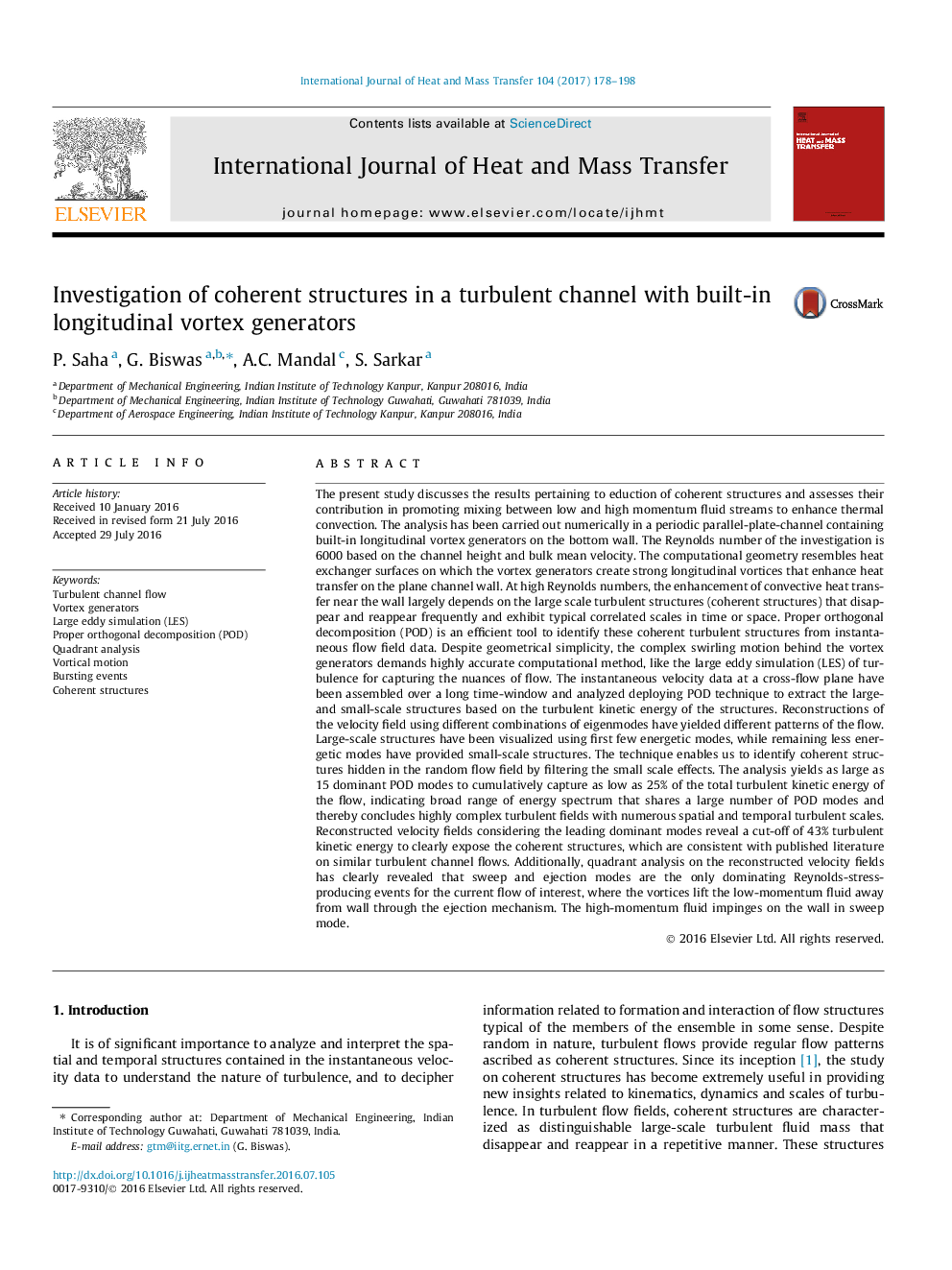| Article ID | Journal | Published Year | Pages | File Type |
|---|---|---|---|---|
| 7054871 | International Journal of Heat and Mass Transfer | 2017 | 21 Pages |
Abstract
The present study discusses the results pertaining to eduction of coherent structures and assesses their contribution in promoting mixing between low and high momentum fluid streams to enhance thermal convection. The analysis has been carried out numerically in a periodic parallel-plate-channel containing built-in longitudinal vortex generators on the bottom wall. The Reynolds number of the investigation is 6000 based on the channel height and bulk mean velocity. The computational geometry resembles heat exchanger surfaces on which the vortex generators create strong longitudinal vortices that enhance heat transfer on the plane channel wall. At high Reynolds numbers, the enhancement of convective heat transfer near the wall largely depends on the large scale turbulent structures (coherent structures) that disappear and reappear frequently and exhibit typical correlated scales in time or space. Proper orthogonal decomposition (POD) is an efficient tool to identify these coherent turbulent structures from instantaneous flow field data. Despite geometrical simplicity, the complex swirling motion behind the vortex generators demands highly accurate computational method, like the large eddy simulation (LES) of turbulence for capturing the nuances of flow. The instantaneous velocity data at a cross-flow plane have been assembled over a long time-window and analyzed deploying POD technique to extract the large- and small-scale structures based on the turbulent kinetic energy of the structures. Reconstructions of the velocity field using different combinations of eigenmodes have yielded different patterns of the flow. Large-scale structures have been visualized using first few energetic modes, while remaining less energetic modes have provided small-scale structures. The technique enables us to identify coherent structures hidden in the random flow field by filtering the small scale effects. The analysis yields as large as 15 dominant POD modes to cumulatively capture as low as 25% of the total turbulent kinetic energy of the flow, indicating broad range of energy spectrum that shares a large number of POD modes and thereby concludes highly complex turbulent fields with numerous spatial and temporal turbulent scales. Reconstructed velocity fields considering the leading dominant modes reveal a cut-off of 43% turbulent kinetic energy to clearly expose the coherent structures, which are consistent with published literature on similar turbulent channel flows. Additionally, quadrant analysis on the reconstructed velocity fields has clearly revealed that sweep and ejection modes are the only dominating Reynolds-stress-producing events for the current flow of interest, where the vortices lift the low-momentum fluid away from wall through the ejection mechanism. The high-momentum fluid impinges on the wall in sweep mode.
Keywords
Related Topics
Physical Sciences and Engineering
Chemical Engineering
Fluid Flow and Transfer Processes
Authors
P. Saha, G. Biswas, A.C. Mandal, S. Sarkar,
